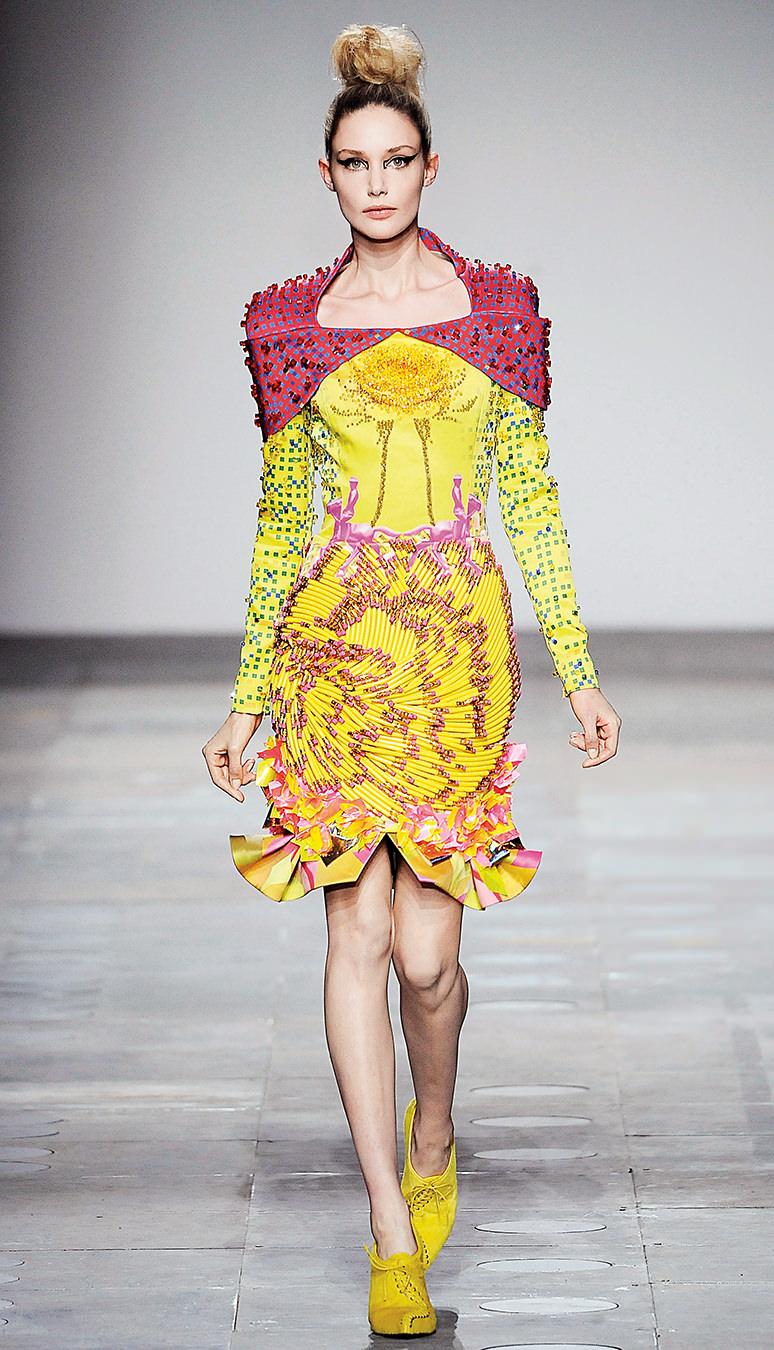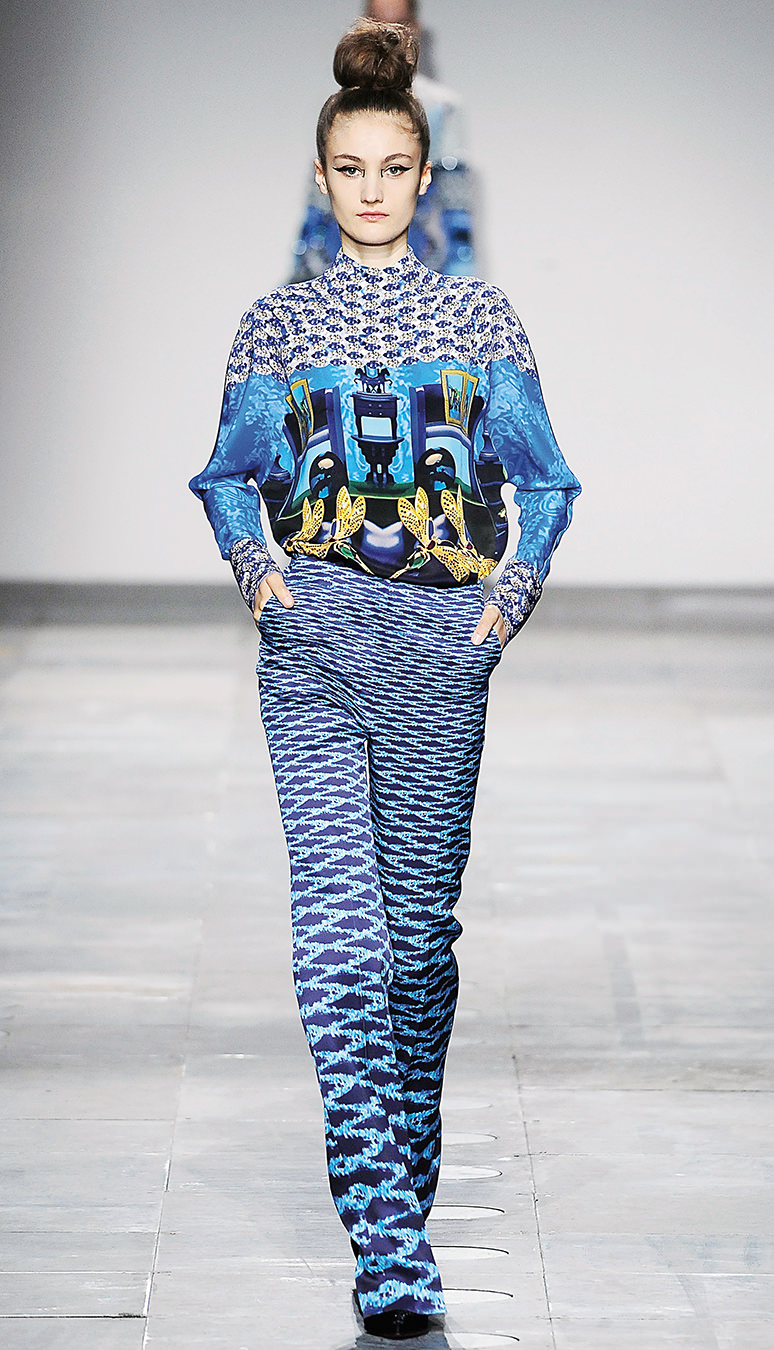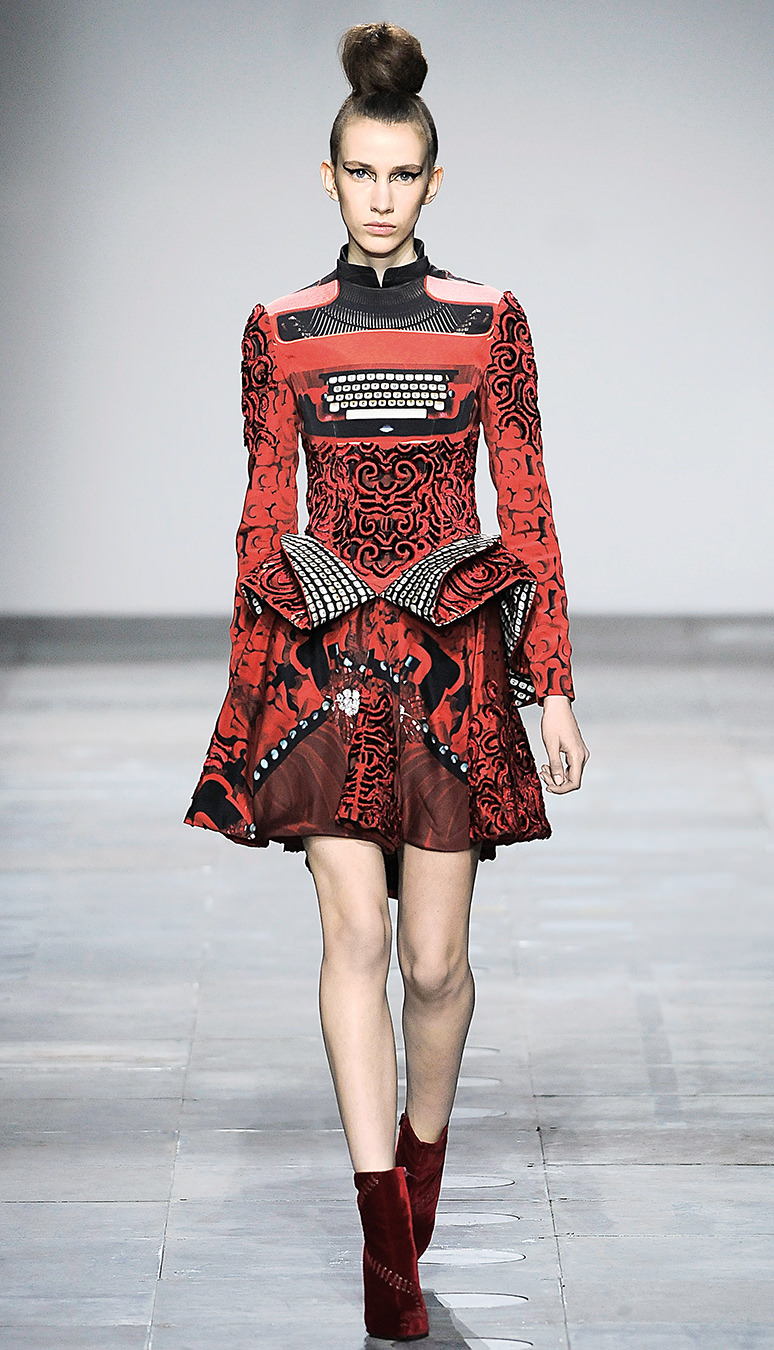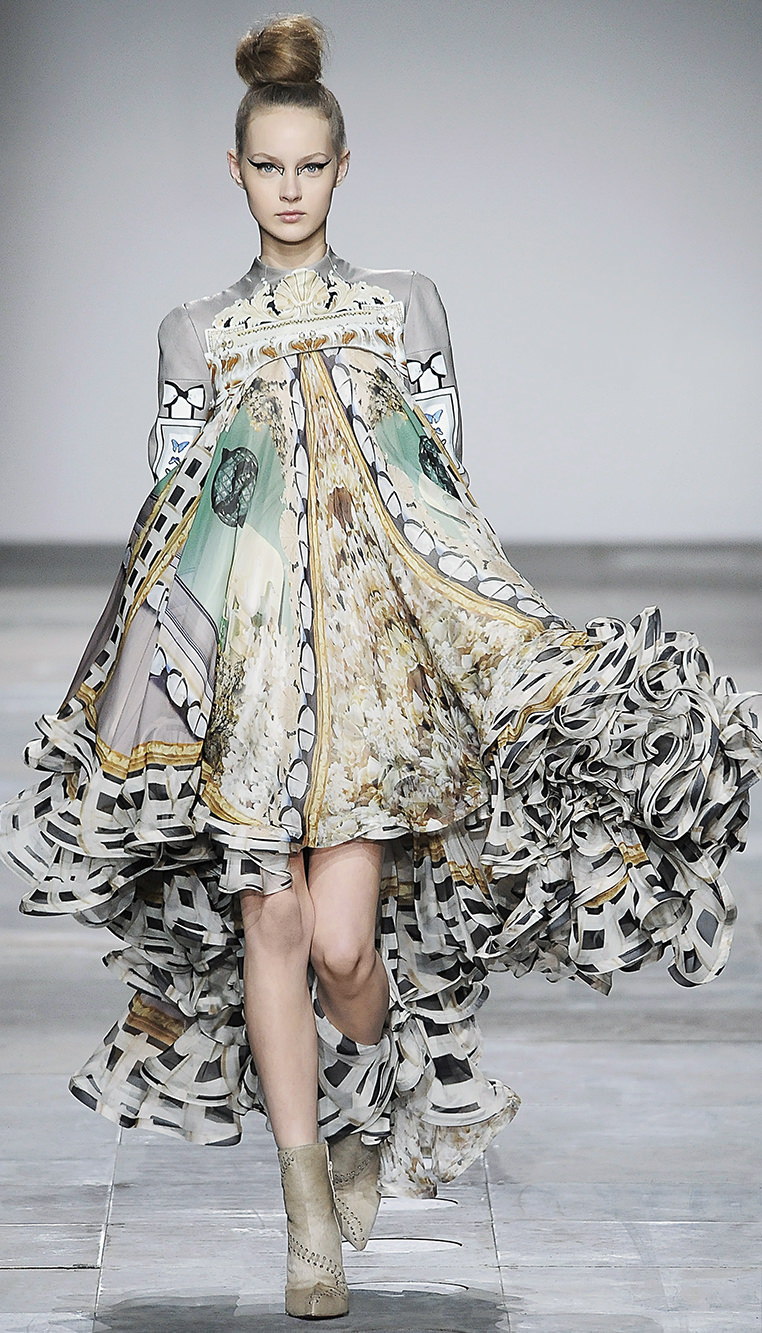-

Mary Katrantzou’s autumn/winter 2012 collection.
-

Mary Katrantzou’s autumn/winter 2012 collection.
-

Mary Katrantzou’s autumn/winter 2012 collection.
-

Mary Katrantzou’s autumn/winter 2012 collection.
Mary Katrantzou
Signature prints.
“This was part of an ashtray,” says Mary Katrantzou, pointing to a cut-crystal motif on an Elizabethan-style silk crepe halter bodice displayed in the Room at the Bay during her first visit to Vancouver. The Greek-born, London-based designer lets her words hang in the air before dissolving into a light giggle. “And that,” she adds, signalling a burnt-ochre cross-hatched design on the same garment, “was a bowl.”
Despite her workaday uniform of head-to-toe black, Katrantzou is as colourful and effervescent in person as her autumn/winter 2012 collection. The seven-part collection is a whirlwind of digital patterns informed by elements of Victoriana, and it examines, deconstructs, and artfully reimagines everyday objects within a sartorial framework. Spoons, chess pieces, and a claw-footed bathtub all serve as inspiration, as does a Swiss-made Olivetti Lettera 35 typewriter from the 1930s. Even the HB pencil is raised from its humble desktop origins—with the help of French haute couture embroidery house Lesage, in its first-ever collaboration with a U.K.-based designer—to loftily embellish a vibrant yellow, tongue-in-cheek “pencil” skirt.
While it celebrates “anything that has a mundane purpose in life” in a riotous and exuberant manner, Katrantzou’s work can’t be dismissed as pop-art pastiche. Any whimsical flourishes are grounded by impeccable construction and a flawless, meticulous technique.
Katrantzou is a former Rhode Island School of Design architecture student with a master’s degree in fashion from London’s acclaimed Central Saint Martins College of Arts and Design, and although she may not have invented the medium of digital print on the runway, she has revolutionized its use. Not merely informed by a particular print, her signature prints inform every step of the design process. Rather than cutting fabric to its best advantage, she creates both the print and the garment at the same time in an organic and symbiotic manner. She combines textures and textiles that would give even a seasoned veteran pause, as evidenced by a silk chiffon baby-doll dress with a printed-leather yoke that seems to move of its own volition, even when laid out on a table.
Sourcing images of, for example, Fender guitars, Staffordshire ceramic dogs, and Fabergé eggs from the Internet, as well as from her personal environment, Katrantzou digitally sketches and then layers the screen captures together, resulting in a multi-dimensional collage. She then applies them to a computer-generated body in order to calibrate scale, perspective, and depth. The resulting design is then printed and digitally painted “so it’s as true to life as possible, but still with a very distinct difference,” she explains. “As the silhouettes develop from this painting, we engineer it onto the [garment] pieces.” Virtually every panel needs to be specially manipulated, she says, in order to properly curve around a three-dimensional body. “When you start creating a second skin for a woman, all those 3-D elements make it more complex. It’s a lot more complicated than most people think.”
Originally dubbed the “Princess of Prints” by the British press upon her debut in 2008, Katrantzou was elevated to “Queen of Prints” in 2010 after winning the Swiss Textiles Award. (Alexander Wang was the winner the previous year.)
“Oh, how I hated ‘Princess of Prints’,” she recalls. “It’s so tacky, but I guess it’s nice in hindsight. Then when the articles were calling me the ‘Queen of Prints’, I was all, ‘Oh my God! I’ve been promoted.’ It’s really nice to be at the forefront of digital print and to see what advances there have been, because people weren’t as ready to embrace print when I started.”
If demand for her work is any indication, that initial reticence has since resolved itself into a global hug. With her own signature lines for prêt-à-porter and couture, Katrantzou recently released two collaborative lines this past February: one with eminently affordable U.K. retailer Topshop and the other with iconic French handbag label Longchamp.
“The [collaboration with] Longchamp sold so well that it allowed me to have a lot more confidence in the area of accessories,” she says. “It only makes sense because people who might not be comfortable with bold prints in a dress don’t need to fully commit to it with a bag or whatever. It’s important to allow them to buy independently that way. And because we started to work with bigger retailers who do have that [accessories] division under them, like the Bay in Canada, or, in London, Harvey Nichols or Selfridges, the time can only be right.” Is that, perhaps, a hint of an accessories collection for Katrantzou’s future repertoire? We can only hope.




